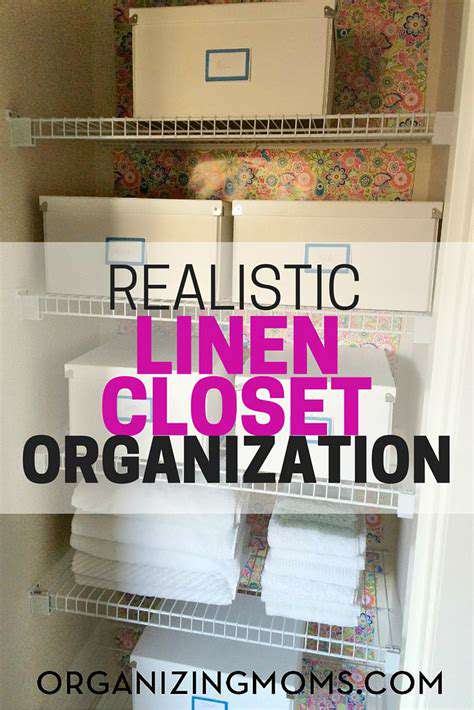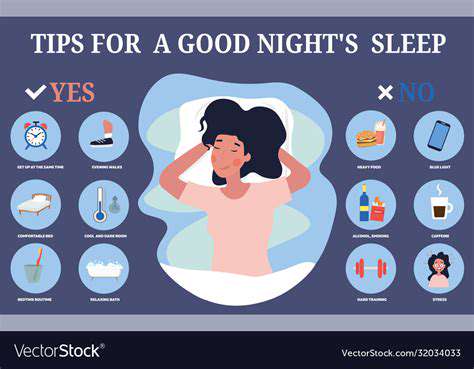How to Organize Your Linen Closet
Condition matters just as much as quantity. Examine each piece under good lighting for subtle wear like thinning fabric or fading colors that might not be obvious at first glance. Pro tip: Hold sheets up to the light to spot invisible weak spots that could tear during the next wash. For towels, check the absorbency by sprinkling water – if it beads up instead of soaking in, it's time for replacement.
Identifying Your Needs
Your linen requirements depend on several practical factors. Count the beds in your home and note their sizes – standard, queen, or king. Consider your laundry routine too; if you wash weekly, you'll need at least two sets per bed. For bath towels, the general rule is three per person: one in use, one clean, and one in the laundry. Don't forget specialty items like beach towels or picnic blankets that might need dedicated storage space.
Anticipate future needs by considering lifestyle changes. Are your children transitioning to larger beds? Planning a bathroom renovation that might require more towels? Creating a simple spreadsheet with current inventory and projected needs can help visualize what to keep, donate, or purchase.
Decluttering and Discarding
Adopt a systematic approach to decluttering. Create three clearly labeled bins: Keep, Donate, and Discard. Handle each item only once – prolonged deliberation often leads to keeping things you don't need. For sentimental items like heirloom linens, photograph them before letting go if you can't repurpose them practically.
When evaluating condition, be ruthlessly practical. That beautiful but scratchy guest towel? Donate it. The sheet set missing a pillowcase? Repurpose it as cleaning rags. Remember: space in your home is valuable real estate – only keep what serves you well.
Choosing the Right Storage Solutions
Effective storage begins with understanding your space constraints. Measure your closet dimensions carefully, noting any awkward angles or protrusions. Modular storage systems offer flexibility – mix and match shelves, drawers, and hanging rods to suit your collection. For small spaces, consider under-bed storage bags or vacuum-sealed containers for seasonal items.
Material choice impacts longevity. Cedar-lined cabinets naturally repel moths, while breathable cotton storage bags protect delicate items. Clear acrylic bins combine visibility with protection, while woven baskets add aesthetic appeal for frequently accessed items.
Organizing by Category and Type
Create a logical hierarchy for your linens. Start with broad categories (bed, bath, table), then subdivide by size and frequency of use. Color-coding within categories creates visual cues – group all white bath towels together, patterned ones separately. For sheet sets, store each complete set (flat sheet, fitted sheet, pillowcases) together in one of its own pillowcases – this keeps sets intact and makes selection easy.
Labeling takes organization to the next level. Use a consistent labeling system – whether printed tags, chalkboard labels, or fabric markers directly on storage bins. Include both category and size information for quick identification.
Maintaining Your Organized Linen Closet
Establish maintenance routines to preserve your system. Schedule seasonal linen audits – spring and fall are ideal times to rotate seasonal items and reassess needs. Implement a one in, one out rule to prevent accumulation – when adding new linens, remove equivalent older items.
Protect your investment with proper care. Fold items immediately after laundering to prevent wrinkles. Consider placing silica gel packets in storage areas to control moisture and prevent musty odors. Regularly air out stored linens to keep them fresh between uses.
Decluttering and Discarding: Making Room for What Matters
Decluttering: The First Step
Begin your decluttering process with a clear vision of your ideal linen storage. Remove everything from the space first – this blank slate approach prevents the out of sight, out of mind trap. As you evaluate each item, ask three critical questions: Is it used regularly? Is it in good condition? Does it bring practical or aesthetic value?
Discarding the Unnecessary
Develop criteria for discarding that balances practicality with sentimentality. Set measurable standards: towels that no longer absorb, sheets with permanent stains, or items unused for over a year. For quality items you no longer need, consider donating to homeless shelters or animal rescues – many welcome linens in good condition.
Assessing Current Tools and Resources
Evaluate your storage solutions as critically as your linens. Are shelves spaced efficiently? Could hanging organizers maximize vertical space? Sometimes the best organizational tool isn't more storage, but less stuff. Be willing to modify or replace storage that isn't working effectively.
Optimizing Space Utilization
Think vertically and in layers. Install adjustable shelving to customize spacing for different items. Use shelf dividers to prevent stacks from toppling. Door-mounted racks or hooks can hold frequently used items like robes or beach towels. For deep shelves, install pull-out bins to access items in back easily.
Prioritizing Workflow Efficiency
Organize according to your usage patterns. Place everyday items at eye level, seasonal storage higher up, and backup supplies lower down. If you change bedding weekly, store complete sheet sets together for quick access. Align your storage with your habits rather than forcing new habits to fit arbitrary organization.
Maintaining a Sustainable System
Build maintenance into your routine. Schedule 10-minute weekly linen checks to straighten and reassess. Keep a donation bin nearby for items that outlive their usefulness. Teach household members the system to ensure everyone contributes to its upkeep.
Creating Zones and Sections for Efficient Storage

Defining Zones for Enhanced Functionality
Divide your linen storage into distinct activity zones. Create a daily use zone for frequently accessed items, a guest zone for special occasion linens, and a seasonal zone for rotated items. This zoning approach reduces decision fatigue when putting away or retrieving linens.
Sectioning for Task Categorization
Within each zone, implement logical subdivisions. The bed linen zone might separate by bed size (twin, full, queen), then by type (sheet sets, duvet covers, mattress protectors). Bath linens could divide by user (family, guests) then by purpose (bath towels, hand towels, washcloths).
Optimizing Resource Allocation within Zones
Allocate space proportionally to usage. Everyday towels deserve prime real estate, while infrequently used guest towels can occupy less accessible spots. Reserve the most convenient shelves for items handled daily, like washcloths and kitchen towels.
Enhancing Communication and Collaboration Across Sections
Make the system intuitive for all users. Use consistent labeling and consider creating a simple reference guide if multiple people access the linens. Color-coded tags or baskets can help visual learners navigate the system easily.
Improving User Experience within Sections
Design each section for effortless use. Fold items uniformly so quantities are visible at a glance. Store similar items at consistent depths – for example, always stack towels five high for easy counting. These small consistency details dramatically improve usability.
Ensuring Data Integrity and Security within Zones
Protect special items appropriately. Store heirloom linens in acid-free tissue in clearly marked containers. Keep valuable items separate from everyday use to prevent accidental damage. Consider photographing inventory for insurance purposes.
Measuring the Effectiveness of Zone and Section Design
Regularly assess what's working. Note which zones need frequent reorganization – this indicates a design flaw. Track how often you shop your own linen closet before purchasing new items – an effective system should make your inventory visible and accessible.
Maintaining Your Organized Linen Closet

Choosing the Right Linen Storage Solutions
Select storage that adapts to changing needs. Modular components allow reconfiguration as your collection evolves. Prioritize accessibility – deep bins should have front access, and high shelves need sturdy step stools. Remember that the best storage solution is the one you'll actually use consistently.
Proper Folding Techniques for Maximum Space Savings
Master space-efficient folds. For fitted sheets, try the burrito roll method – it eliminates bulk and keeps sets together. Fold towels uniformly so stacks remain neat. Consider rolling some items like tablecloths to prevent creases. Consistent folding creates predictable stacks that maximize space.
Regular Cleaning and Maintenance for Longevity
Incorporate linen care into household routines. Air out stored linens quarterly to prevent mustiness. Vacuum closet shelves monthly to reduce dust. Immediately repair loose threads or minor damage to prevent worsening. These small acts preserve your linens and organization system.
Preventing Pests and Moisture Damage
Implement natural protective measures. Lavender sachets deter moths while adding a fresh scent. Place moisture absorbers in humid climates. Ensure good air circulation – slightly ajar doors or ventilation holes in containers prevent stagnant air that attracts pests.
Organizing by Frequency of Use for Easy Access
Create a logical flow. Place daily-use items between waist and eye level for ergonomic access. Store backup supplies higher or lower. Keep a small emergency set of basics (one towel, washcloth, sheet set) in an obvious spot for unexpected needs. This thoughtful placement saves time and frustration.











